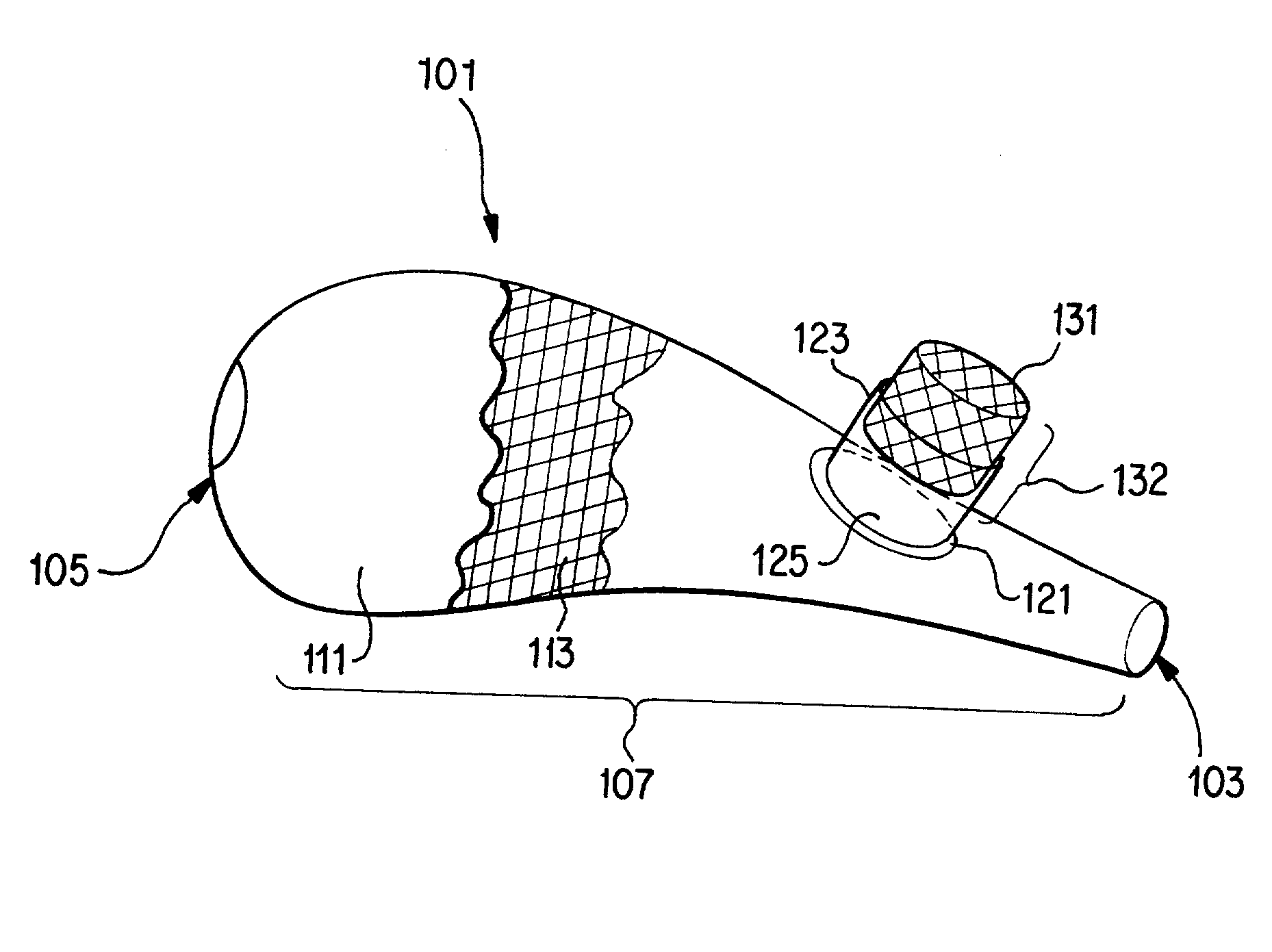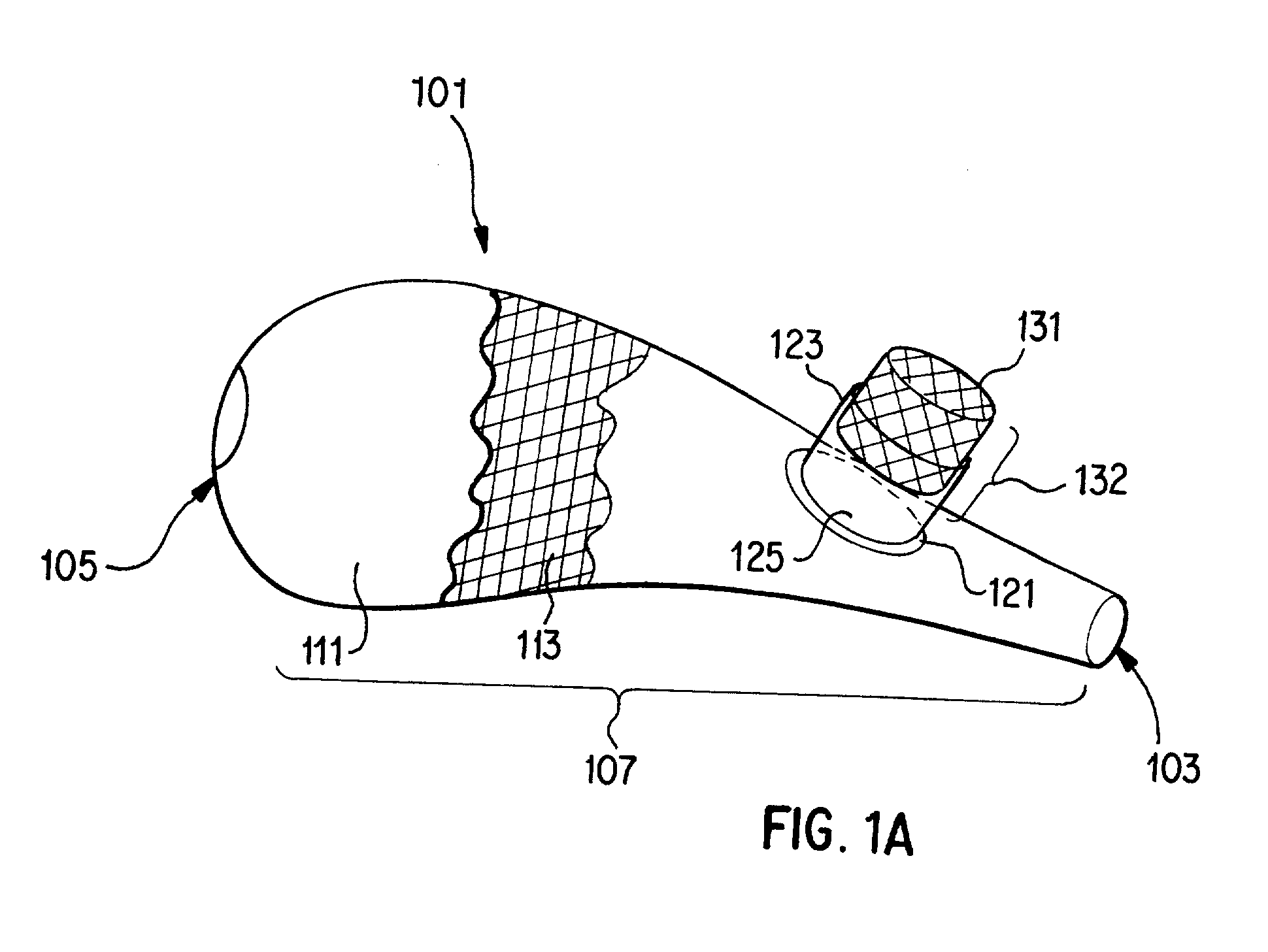Bifurcated stent for percutaneous arterialization of the coronary sinus and retrograde perfusion of the myocardium
- Summary
- Abstract
- Description
- Claims
- Application Information
AI Technical Summary
Benefits of technology
Problems solved by technology
Method used
Image
Examples
Embodiment Construction
[0022]A preferred embodiment of a bifurcated stent 101 according to the present invention is illustrated in FIG. 1A. The bifurcated stent 101 generally has a main covered stent 107 and a side limb 132. The main covered stent 107 generally has a tubular shape with a passageway therethrough, having a leading end 103 and a trailing end 105. The main covered stent 107 may have a slight bend or may otherwise be straight along its extent.
[0023]The main covered stent 107 generally refers to a combination of an underlying main stent 113 (bare stent) and a graft 111 (covering). The graft 111 is preferably inside the main stent 113, but may also be outside the main stent 113. In another embodiment, the stent 113 may be sandwiched between an outer graft and an inner graft (not pictured). The graft 111 is made from any of a number of commercially available materials such as PET, PTFE, or other suitable material as known in the art. Hereinafter, the combination of the graft 111 and the main sten...
PUM
 Login to View More
Login to View More Abstract
Description
Claims
Application Information
 Login to View More
Login to View More - Generate Ideas
- Intellectual Property
- Life Sciences
- Materials
- Tech Scout
- Unparalleled Data Quality
- Higher Quality Content
- 60% Fewer Hallucinations
Browse by: Latest US Patents, China's latest patents, Technical Efficacy Thesaurus, Application Domain, Technology Topic, Popular Technical Reports.
© 2025 PatSnap. All rights reserved.Legal|Privacy policy|Modern Slavery Act Transparency Statement|Sitemap|About US| Contact US: help@patsnap.com



